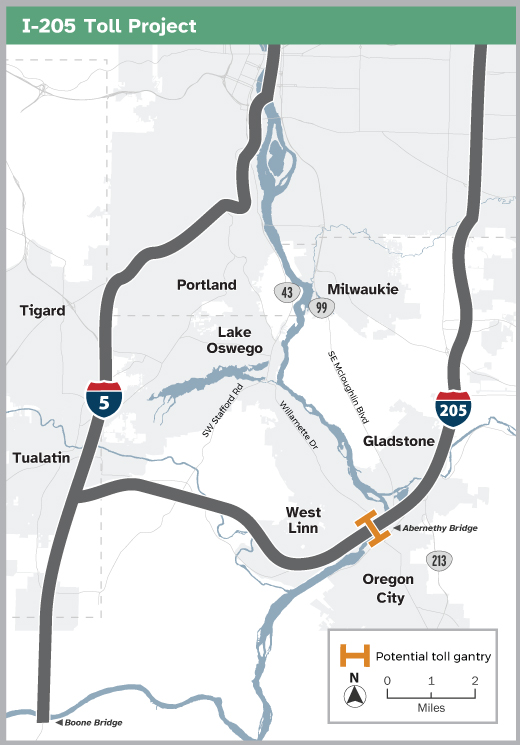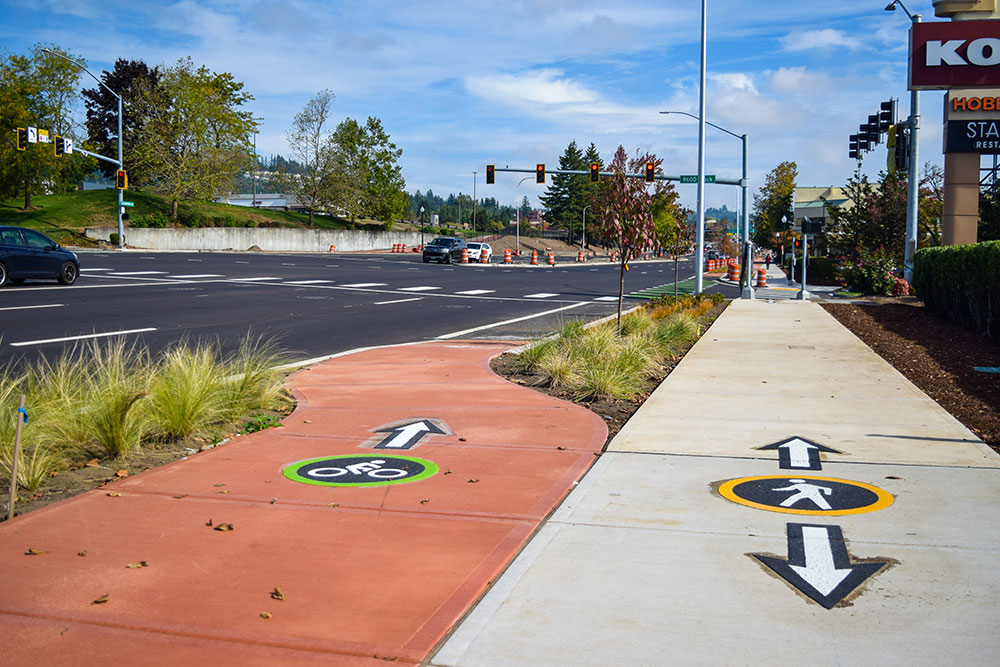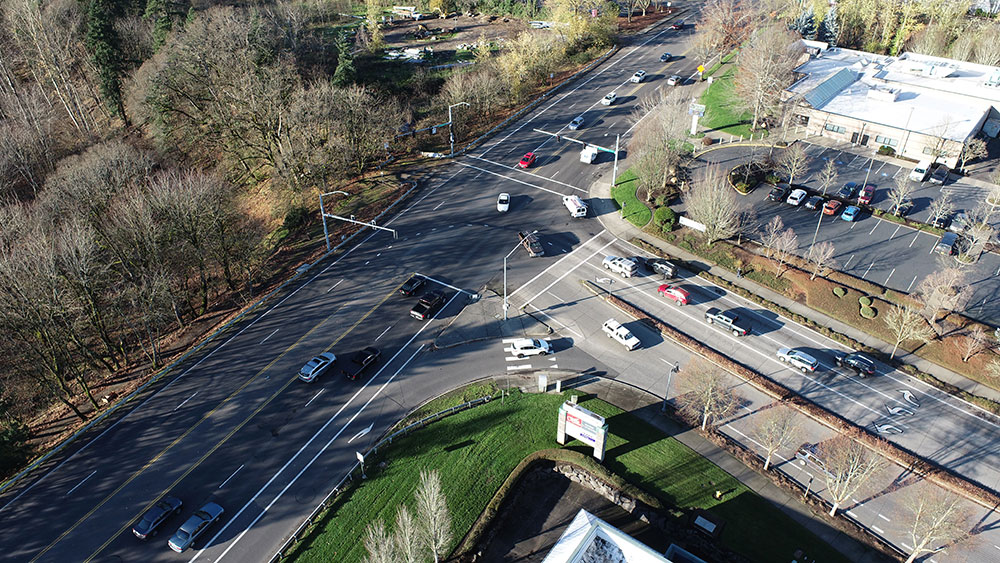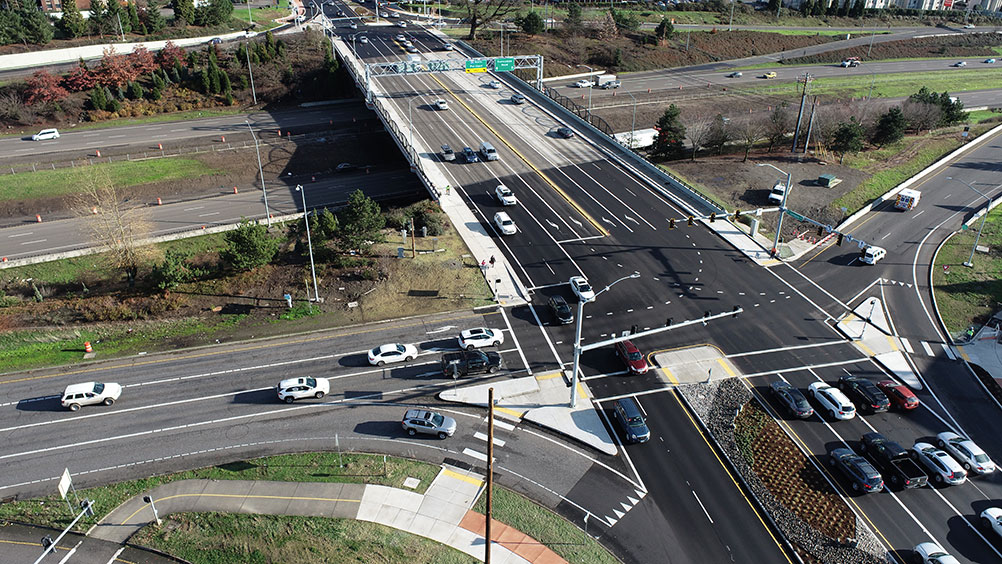Clackamas County is not proposing tolling, but rather is responding to tolling programs proposed by the Oregon Department of Transportation.
I-205 Toll Project Environmental Assessment
- Op-Ed from Board of Commissioners and Mayors, Pamplin Newspapers, May 23, 2023
- Letter from County Commission to Governor Kotek, Senate President Wagner, and House Speaker Rayfield, May 11, 2023
- News release: Clackamas County commissioners grateful for governor, legislator leadership to pause tolling, May 4, 202
- News release: Decreased safety on local roads leads Clackamas County concerns with I-205 Toll Project, April 24, 2023
- Letter from Business Community, April 19, 2023
- Board of Commissioners Policy Session, I-205 Toll Project Environmental Assessment Findings Technical Letter, April 19, 2023
- Board of Commissioners Policy Session, I-205 Toll Project Environmental Assessment, April 12, 2023
- Letter from Clackamas County Coordinating Committee (C4) – April 10, 2023
- Second letter requesting extension of the EA review timeline – March 14, 2023
- Board of Commissioners Policy Session: I-205 Toll Project Update from Oregon Department of Transportation - March 8, 2023
- Notice: ODOT seeking public input on tolling – March 1, 2023
- Letter requesting extension of the EA review timeline – March 1, 2023
- Board of Commissioners Policy Session: I-205 Toll Project Environmental Assessment Update - March 1, 2023
EA Response Letters
- Business organizations
- City of Canby
- City of Happy Valley
- City of Lake Oswego
- City of Oregon City
- City of Tualatin
- City of West Linn
- City of Wilsonville
- Clackamas County Comments on I-205 EA, April 19, 2023
- Metro
- Redland/Viola/Fischers Mill Community Planning Organization (CPO)
- Stafford Hamlet
- TriMet
Background
The Oregon Department of Transportation (ODOT) is proposing two projects to toll highways in Clackamas County and the Portland metropolitan region:
- The I-205 Toll Project would toll the Abernethy and Tualatin River bridges in Clackamas County to fund construction of a third lane and seismic improvements to bridges on I-205 from Stafford Road to OR 213. ODOT intends to implement variable-rate pricing that fluctuates throughout the day. Earliest tolling was planned to begin: 2024*.
- The Regional Mobility Pricing Project (RMPP) is evaluating congestion pricing, using variable-rate tolls, for the entire I-5 and I-205 corridor in the Portland metropolitan area. ODOT intends this tolling to raise revenue and address congestion. Earliest tolling was planned to begin: 2025*.
*Note: On May 1, 2023, Oregon Gov. Tina Kotek announced she will delay all toll collection until Jan. 1. 2026. In a May 4 letter to legislators, she said the delay is to receive more information on Oregon Department of Transportation's "plans to mitigate diversion and address equity concerns" and set Dec. 15, 2023 as the report submission deadline.
Clackamas County has been involved in reviewing and commenting on these projects, and their potential impact on county residents and businesses for many years. County commissioners and staff sit on state and regional advisory committees, attend public meetings, testify and submit written comments on legislative proposals, and participate in meetings with staff from ODOT and our regional partners, including cities and neighboring counties. In addition, there have been numerous discussions about the proposed programs at Board of Commissioners meetings that are open to the public.
Below are links to a variety of documents and meetings that reflect the county’s involvement with and concerns about the proposed tolling programs.
General Documents
- Addressing the Missing Third Lane: I-205 Improvements Project Phase 2, Feb. 6, 2024
- Joint Values on the Proposed Regional Congestion Pricing and Toll Projects within the Portland Metro Region, Dec. 5, 2023
- The 2023 State Legislature Must Take Action on the I-205 Toll Project, letter from local governments, April 5, 2023
- Clackamas County Staff Comments on I-205 Tolling Project Transportation Technical Report – Sept. 15, 2022
- Specific proposed language changes to the Oregon Highway Plan Policy Language – Sept. 12, 2022
- Clackamas County Perspective on ODOT’s I-205 Toll Project – April 13, 2022
- I-205 Toll Project Regional Transportation Plan Amendment – Staff Comments – Nov. 15, 2021
- I-205 NEPA Alternatives Comment Period – Sept. 15, 2021
- Clackamas County Values on Proposed Transportation Funding Solutions for the Interstate System in the Portland Metropolitan Area – April 15, 2021
- Portland Metro Area Value Pricing Feasibility Analysis – July 10, 2018
Board of Commissioners Meetings
| Aug. 16, 2023 | Regional Tolling Update Staff report video |
| April 12, 2023 | I-205 Toll Project Environmental Assessment Staff report video |
| March 8, 2023 | I-205 Toll Project Update from Oregon Department of Transportation Presentation video |
| March 1, 2023 | I-205 Toll Project Environmental Assessment Update Staff report video |
| Jan. 4, 2023 | Regional Mobility Pricing Project – Purpose and Need & Proposed Action Comment Letter Staff report and draft letter to ODOT video |
| Sept. 7, 2022 | Tolling Updates Staff report and draft letter to ODOT video |
| July 19, 2022 | Tolling Update Staff report video |
| July 12, 2022 | Low-Income Toll Report and Congestion Pricing Policy Update video |
| April 26, 2022 | Tolling Update video |
| April 12, 2022 | Testimony to Metro Council on I-205 Project Amendments video |
| March 9, 2022 | Metro RTP and MTIP Amendment Direction: I-205 Toll Program Staff report video |
| Feb. 22, 2022 | I-205 Toll Project RTP and MTIP Amendment Request Update Staff report video |
| Jan. 11, 2022 | I-205 Toll Project: Regional Transportation Plan and Metropolitan Transportation Improvement Plan Amendment Requests Staff report video |
| Dec. 7, 2021 | Tolling Op-Ed Draft Draft opinion article video |
| Sept. 14, 2021 | Regional Congestion Pricing Study Update Staff report video |
| Aug. 10, 2021 | Regional Congestion Pricing Study Update video |
| July 13, 2021 | Metro Congestion Pricing Study Draft letter video |
| June 29, 2021 | Metro’s Congestion Pricing Study video |
| April 14, 2021 | Transportation Funding for the Interstate Highway System and County Values on Proposed Solutions Staff report video |
Legislative Advocacy
Tolling and the I-205 Improvements Project have been part of the county’s state and federal legislative agendas since 2016. Legislative agendas, annual reports and historical background
The county also works closely with other jurisdictions and with the business community to share perspectives with legislators on the topic, as shown in joint letters below.
- Letter from state legislators representing Clackamas County to Oregon’s Congressional Delegation – March 2, 2022
- Letter from state legislators representing Clackamas County to the Chair of the Oregon Transportation Commission – Feb. 4, 2022
- Letter from Clackamas County, Washington County, state and regional transportation organizations, cities and businesses to Oregon’s Congressional Delegation – June 16, 2021
- Letter from Clackamas County Board Chair on behalf of the Board of Commissioners, to co-chairs of Oregon Legislature Joint Committee on Transportation – May 11, 2021
- Letter to state legislature from Clackamas County, cities in Clackamas County and business organizations – Feb. 25, 2020
- Letter from state legislators representing Clackamas County to leadership of the Oregon House of Representatives – Feb. 18, 2020
 Translate
Translate










